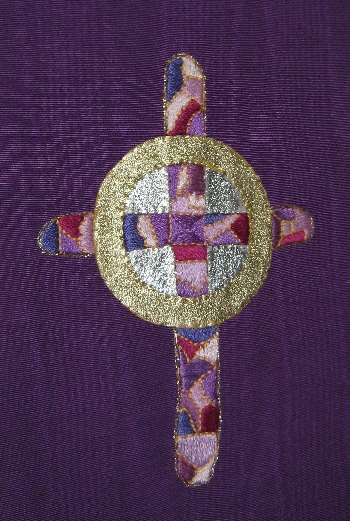
Yesterday, 17th February was Ash Wednesday, the first day of the season of Lent.
Originally, Lent was a period in which new Christian believers underwent a period of teaching and preparation ready to be baptised on Easter Eve/Holy Saturday, before being admitted to receive Communion for the first time on Easter Day. Fasting and prayer were regarded as being important elements of that time of preparation.
Lent was also the time when those who had been excommunicated from Christian fellowship because of apostasy or serious faults, could undergo a time of prayer, fasting and penitential acts showing that they had truly repented of their past failures, so that they might be readmitted to Eucharistic fellowship on Easter Day.
In time, it was seen that all Christian believers might benefit from a period of self-examination, fasting study and prayer, before celebrating the joy of Easter Day. This is how the keeping of the season of Lent as we now know it, came into being.
As most people know, Lent lasts for forty days, commemorating the forty days and nights that Jesus spent being tempted and tested in the wilderness, in advance of beginning his public ministry. However, if you add up the number of days between 17th February, Ash Wednesday 2010 and 4th April, Easter Day 2010, you will discover that there are forty seven days in total. The reason for this apparent anomaly is simple – you do not count the Sundays as these are deemed to be feast days and not fasting days.
Yesterday evening, I held a Eucharist for Ash Wednesday with the imposition of ashes for those who wanted to receive it. We suffered additional penance with the Church itself being particularly cold. Heating within the St. Clement’s Church building is not that good at the best of times. However, on Sundays, we at least benefit from our host congregation, the Ceskobratrské Cíckve Evangelické /the Evangelical Church of Czech Brethren, having had the heating on for their service starting at 09.30 am before ours which begins at 11.00am. But the CCE are not great followers of the Liturgical Year other than celebrating Christmas and Easter and therefore do not have their own Ash Wednesday service.
My other act of penance in advance of Wednesday evening was having to produce copies of a completely new service booklet containing the liturgy. Having been in Prague since September 2008, this was my second Ash Wednesday in the Czech Republic. Before moving here, I bought an external hard-drive and copied a whole load of material off the Shelswell Benefice computer belonging to my former North Oxfordshire parishes. This material included various service booklets for special days in the Christian Year including Ash Wednesday, all of which had been put together by my former part-time Benefice Administrator, the wonderful Becky Adams.
Last year, I printed off copies of the Ash Wednesday service booklet that we had used for a number of years in my previous parishes. All I did was alter the cover so that it said ‘St. Clement’s Anglican Episcopal Church, Prague’ instead of ‘Shelswell Group of Parishes’. But when I came to use it I discovered to my horror as I led the intercessions, that the text required me to pray for ‘Her Majesty the Queen and the High Court of Parliament’! Such a wording is somewhat out of place in the capital of a European republic with a congregation that only has a minority of Brits within it.
We should all learn from our mistakes and I certainly did from that embarrassing one. Whilst the St. Clement’s congregation is part of the forty-fourth diocese of the Church of England, not quite the entire liturgy of the Church of England is suitable for using in a continental European Chaplaincy.


